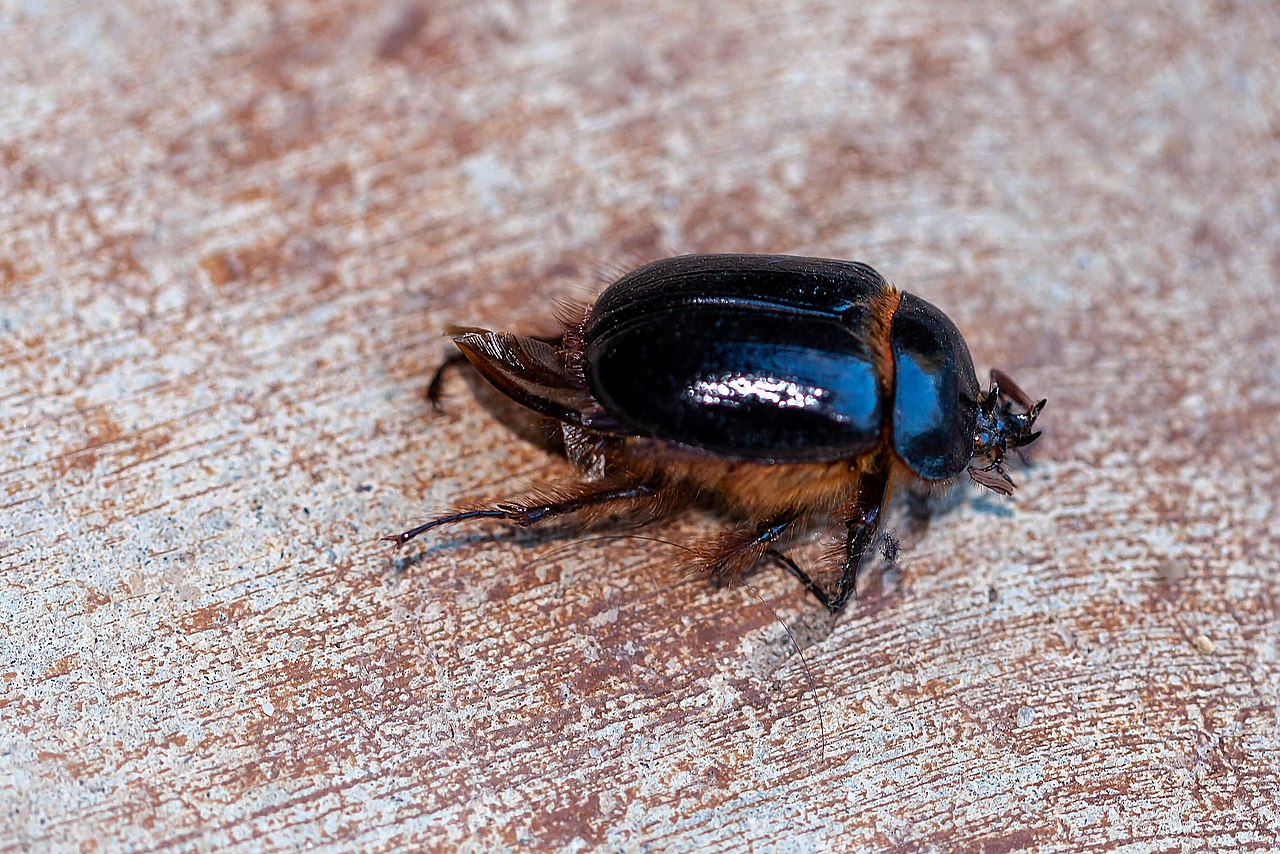

They only come out at night – kind of like vampires – but these guys don’t bite. In fact, when we see them, they have fused mouth parts and couldn’t bite if they wanted to. They will fly against your windows, attracted by light. Kind of spooky, since we are usually just gearing up for, or down from, Halloween when they appear.
All they want is to find a female to mate with before they run out of fuel. We only see the males; females stay snug in their burrows and send out a lemony scent to guide their potential mates to them.
What am I talking about? Those olive-sized dark brown or black, hairy-bellied beetles called rain beetles. Pleocoma, the genus that includes rain beetles, translates from Latin and Greek as “many hairs.” Rain beetles are definitely hairy! Long bristles cover their undersides, hang from their legs, and line their wing covers. Adult beetles vary in color from dark honey to mahogany to black. Males are somewhat smaller than the one-to-two-inch-long females.
The Pleocoma family contains about 30 different species scattered throughout the wooded hills and mountains between northern Baja California and southern Washington. They live as grubs in the soil, surviving on tough woody roots of trees and shrubs. They don’t dig, but chew their way through soil, one bite at a time. Many species are limited to colonies that are in scattered sites, and the ranges of some are no more than one or two counties. When digging in the soil, depending on the size of the hole, you may find a few to a handful of the worm-like, C-shaped larvae.
The amazing part? By the time they have matured, Pleocoma have spent up to twelve years underground! Only a handful of insects are known to live longer. Since they have such a hard time surviving as a grub, they only manage to store a small amount of fat. That fat is precious to the beetles because, as adults, the Pleocoma can’t eat. During pupation, a rain beetle’s mouth parts fuse. They have no mouthparts or digestive tracts.
Because of the metabolic reaction that uses stored body fat, male beetles will only survive about 24 to 48 hours once they leave the soil. They only have enough energy for about two hours of flight time. When we see them alive, it’s almost always right after they have emerged from their holes during the first rain. After mating, the females plug their holes, lay eggs and die.
Again, these insects don’t appear to damage the oaks and native shrubs they feed on. They can become pests if they attack the roots of orchard trees, but normally, no control measures are needed. So, the next time you see one of these amazing beetles, hopefully you can reflect on the unusual life story that led to it being nearby for such a fleeting period of time. For more information about rain beetles, check out the UC Bug Squad at https://ucanr.edu/blog/bug-squad/article/ever-seen-rain-beetle
Sources: Powell, J. & C. Hogue, “California Insects” and Greensfelder, L., “California Wild”
Cathy Calef is a University of California Cooperative Extension Master Gardener of Tuolumne County.








